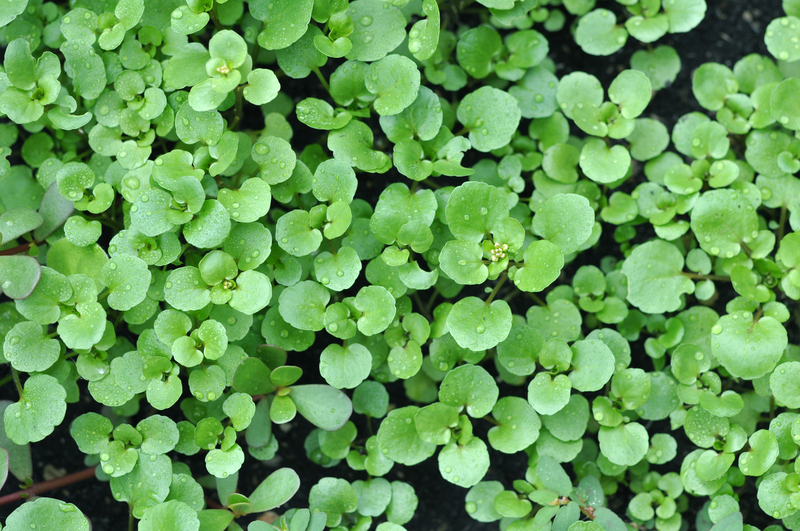Secrets to Speedy Tree Stump Decomposition and Removal
Are you tired of annoying tree stumps spoiling your yard's beauty or getting in the way of your landscaping plans? Tree stumps not only disrupt your landscape's aesthetics but can also become safety hazards, harbor pests, and obstruct new plant growth. Fortunately, there are several effective and eco-friendly methods to accelerate the decomposition of tree stumps and achieve fast, efficient stump removal. In this comprehensive guide, we'll unveil the top secrets, tips, and best practices to help you handle stumps in your garden or yard efficiently.
Understanding the Importance of Fast Stump Decomposition
While leaving a tree stump in place may seem harmless, there are numerous reasons why you should prioritize its removal:
- Prevents pest infestations -- Rotting wood is a magnet for termites, ants, beetles, and other insects.
- Reduces fungus and disease risks -- Fungi thrive on decaying wood and could transfer to healthy plants.
- Improves landscape aesthetics -- Removing stumps frees up space for gardening, outdoor activities, or new plants.
- Eliminates tripping hazards -- Tree stumps and roots can be a danger to kids, pets, and lawn equipment.
- Facilitates new plant growth -- Stumps block essential nutrients and space for new turf, trees, or garden beds.
Speedy stump decomposition is critical to maintaining a vibrant, healthy, and functional landscape. But how do you accelerate the natural process of stump breakdown?

The Science Behind Tree Stump Decomposition
Tree stump decomposition is a gradual process in which fungi, bacteria, insects, and environmental factors break down tough wood fibers into soil. This natural process can, however, take up to a decade or even longer, depending on several factors:
- Tree species: Hardwoods like oak and maple decompose more slowly than softwoods such as pine or fir.
- Stump size and age: Larger, older stumps take longer to decay than smaller or freshly cut ones.
- Moisture and temperature: Warm, damp conditions accelerate decomposition, while dry or cold climates slow it down.
- Soil biology: Rich, microbe-filled soil hastens breakdown, while poor, compacted soils delay the process.
Understanding these factors helps you select the most effective techniques for speedy tree stump rotting.
Tried-and-True Secrets for Speedy Tree Stump Decomposition
There are several proven strategies to speed up stump decay and removal. Let's explore the most effective methods, so you can choose the right fit for your landscape and goals.
1. Manual Stump Removal Techniques
-
The Dig and Chop Method:
- Use a shovel to dig around the stump and expose the roots.
- Cut roots with an axe, mattock, or pruning saw.
- Loosen the stump and pry it out of the ground.
-
Stump Grinding:
- Rent or hire a stump grinder machine.
- Grind the stump down below the soil level in layers.
- Remove wood chips, fill the hole with soil, and replant or reseed as desired.
2. Accelerated Decay with Chemicals
Chemical stump removal accelerates natural decomposition with minimal heavy labor. Here's how you can achieve rapid stump decomposition using simple supplies:
-
Drill multiple holes (1-inch wide, 8-12 inches deep) into the stump.
- Space holes a few inches apart across the surface and sides.
-
Apply a commercial stump remover (potassium nitrate) or a high-nitrogen fertilizer.
- Nitrogen boosts microbial activity and speeds up wood decay.
-
Soak thoroughly with water.
- This keeps the inside of the stump moist, ideal for decomposition.
-
Cover with a plastic tarp or mulch.
- This traps heat and moisture, creating a micro-environment for fungi and bacteria.
-
Monitor progress and reapply chemicals as needed.
- In several months (typically 6-12), the stump should become soft and crumbly, allowing for easy removal with a shovel.
Warning: Never use chemicals near vegetable gardens, water sources, or desirable plant roots. Always follow product instructions and local regulations for disposal.
3. Eco-Friendly Stump Rotting Methods
Prefer a natural and safe method to decompose tree stumps quickly? Biological decomposition is not only environmentally friendly but also enriches your soil in the process!
- Compost and Mulch Mounds: Pile layers of compost, manure, and mulch on top of and around the stump. This rich organic material attracts heat, moisture, bacteria, and fungi that accelerate rotting.
- Fungi Inoculation: Drill holes into the stump and insert mushroom spawn plugs (such as oyster mushrooms). Fungi are the main wood decomposers and will break down the stump from the inside out, sometimes in just one or two years.
- Sugar and Nitrogen Applications: Sprinkle plain sugar or high-nitrogen organic fertilizers (blood meal, soybean meal, etc.) over and into the stump to feed decomposer microbes and speed up the decay process.
- Keep the Stump Moist: Water the stump regularly, especially in dry weather, and cover with plastic or mulch to retain dampness.
Tip: Combining these methods yields faster and more reliable results. For instance, you can add compost, sprinkle nitrogen, and inoculate with fungi all at once!
4. Burning for Stump Elimination (Where Legal)
Controlled burning is an age-old technique for quick tree stump elimination. However, it has limitations and safety considerations:
- Drill deep holes into the stump, fill with kerosene or stove fuel, and allow it to soak in (never use gasoline).
- After several days, ignite the stump carefully and allow it to smolder under supervision.
- Keep water and a shovel on hand to control the fire.
Important: Always check with your local fire department or municipality. Many areas prohibit open burning, especially during dry or windy conditions.
Speedy Stump Removal: Frequently Asked Questions
How long does it typically take for a stump to decompose naturally?
Naturally, a tree stump can take 3-10 years to decompose depending on wood type, size, and environmental conditions -- but with the right interventions, you can often reduce that to a single season or less.
What is the easiest chemical for rapid rotting of tree stumps?
Potassium nitrate is the most popular and widely available chemical for speedy tree stump rot. It is relatively safe, inexpensive, and effective when used according to the directions.
Are there any natural alternatives to chemicals?
Yes! High-nitrogen organic fertilizers, compost, and wood-decay fungi all dramatically accelerate decomposition without harmful residues.
Should I hire a professional or DIY?
If you have multiple stumps, large stumps, or limited equipment, hiring a stump grinding service may be most efficient. For smaller stumps or if you prefer eco-friendly and budget solutions, consider the methods above.
Key Tips for Maximum Effectiveness
- Cut Stumps as Low as Possible: Use a chainsaw to trim the remaining stump close to ground level before treatment. This exposes more surface area and hastens decomposition.
- Drill Deep, Wide Holes: Deeper and wider holes allow chemicals, compost, and fungi to penetrate more of the stump's structure.
- Keep the Area Moist but Not Soaked: Dampness is vital, but soggy conditions can lead to slow anaerobic decay.
- Cover and Insulate: Tarps or mulch help trap heat and maintain ideal environments for microbes and fungi.
- Monitor and Repeat Treatments: Most stumps require several applications over a few months for best results.
Stump Removal FAQs for Landscaping Success
What can I do with stump wood and wood chips after removal?
- Compost them to enrich future planting beds.
- Use as mulch around trees and shrubs.
- Craft rustic garden decorations or pathways.
- Dispose of in municipal green waste (follow local guidelines).
How can I prevent regrowth of shoots?
Some tree species (like willow, poplar, and sumac) are notorious for sending up root suckers or sprouts after cutting. To prevent regrowth:
- Remove as much of the root system as possible.
- Apply a targeted stump killer to freshly cut surfaces (as directed by the product label).
- Mow or clip back shoots as soon as they appear to starve regrowing roots.
- Consider repeating chemical or mulch treatments until regrowth stops.
Which trees have the toughest stumps to remove?
Hardwood trees like oak, maple, hickory, walnut, and elm produce especially dense, rot-resistant stumps. These may require additional patience or a combination of grinding and chemical/organic treatments for the quickest breakdown.

When Is the Best Season for Removing Tree Stumps?
Most stump decay methods work best from early spring through fall, when soil moisture and temperature support vigorous microbial and fungal activity. Avoid applying chemical or compost techniques in deep winter when cold slows all biological processes.
Final Words: Choosing the Best Method for Fast Stump Removal
Speedy tree stump decomposition and removal not only enhances your landscape's appearance but prevents future plant and property problems. Whether you prefer a mechanical, chemical, or all-natural approach, there's a fast, safe, and effective solution for every yard.
Key takeaways:
- Mechanically remove or grind for instant results.
- Employ potassium nitrate or nitrogen-rich compost to turbocharge decay.
- Use fungi inoculation and organic mulches for eco-friendly removal.
- Always check local rules before burning or using chemicals.
By following these insider secrets and best practices, you'll transform unsightly stumps into rich soil or beautiful new garden spaces quickly and safely. Happy landscaping!